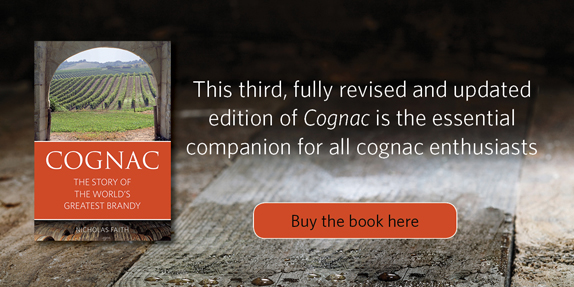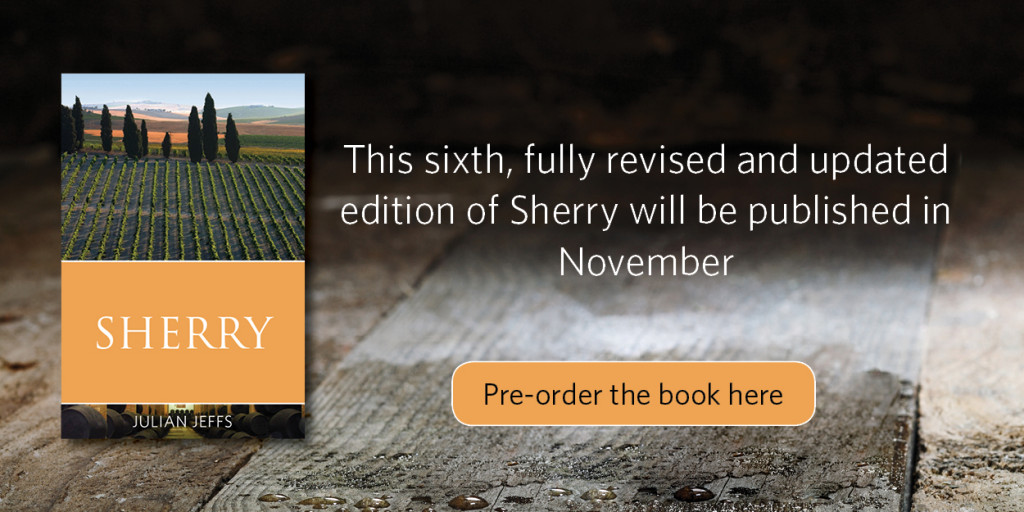Wine and spirits
FREE: Richard Mayson’s guide to vintage port
29 August 2014 by Catherine Holdsworth in Wine and spirits
Richard Mayson’s Guide to Vintage Port is the most up-to-date, authoritative information source on vintage Port and its producers, and Infinite Ideas is making it available free of charge as a PDF or ebook.
Updated on a twice yearly basis the directory also contains an introduction to the production of VP and expert tasting notes, drawn from the latest edition of Richard’s prize-winning Port and the Douro, published by Infinite Ideas in its Classic Wine Library.
Richard Mayson’s Guide to Vintage Port is an invaluable resource for anyone who is interested in a free and regularly updated information source on vintage Port, and particularly:
- Bar managers, supervisors and head bartenders
- Hoteliers
- Sommeliers
- Restaurant managers
- buyers and all Port enthusiasts.
This directory of vintage Ports is the fruit of the author’s thirty years’ experience in writing about Portuguese wine, visiting the producers and discussing their products with them. The guide to Port vintages takes each year in turn, noting relevant weather conditions, market considerations and the overall style of the wines, and highlights particularly successful shippers. Richard assesses each and every year back to 1960, which roughly coincides with the emergence of single-quinta vintage Port (SQVP) in between fully fledged declarations.
Richard Mayson’s Guide to Vintage Port provides full contact details and tasting notes for over 50 vintage Port producers and shippers.
To find out more about this unique resource you can download a copy from our website. Richard Mayson’s Guide to Vintage Port is available as a paperback, PDF or ebook.
“Richard Mayson is a champion of a wine culture and a fresh and authoritative voice in wine literature.” Hugh Johnson
Richard Mayson has worked as a freelance wine writer and lecturer since 1989. His first book, the award-winning Portugal’s Wines and Wine- Makers, was published in 1992. He also wrote The Story of Dow’s Port, published to coincide with the company’s bi-centenary in 1998. The first edition of Port and the Douro, published in 1999, was short-listed for the Andre Simon Award and the second edition, published in 2004, won the Symington Award of Excellence. His book The Wines and Vineyards of Portugal won the André Simon Award for the Drinks Book of the Year in 2003.
Richard has contributed to a number of publications, including the Oxford Companion to Wine and the Larousse Encyclopaedia of Wine. He writes regularly for Decanter and the World of Fine Wine, and lectures toWine and Spirit Education Trust students and at Leith’s School of Food and Wine in London. Richard currently divides his time between his home and business interests in the Derbyshire Peak District and the Alentejo, Portugal where he owns a vineyard. In 1999 he became a Cavaleiro of the Confraria do Vinho do Porto.
Richard Mayson has been shortlisted for the International Wine Feature Writer of the Year, Louis Roederer Champagne 10th International Wine Writers’ Award 2014.
Cognac cocktails for your last summer party
22 August 2014 by Rebecca in Spirits distilled, Wine and spirits
Here in the UK next Monday is August Bank Holiday, a national holiday that signals the end of the summer. Traditionally that means gardening, DIY and meeting up with friends to squeeze the last drop of sunshine out of the season. If you’re having a lunch, picnic or barbecue with friends this weekend (wherever you may be), why not brighten your gathering with a cocktail (or two)? Cognac makes the ideal base for a range of cocktails. This may be a surprise if for you cognac conjures up images of stuffy, leather-chaired gentlemen’s clubs, huge balloon glasses and cigars. So here’s Nicholas Faith’s explanation from his book, Cognac: The Story of the World’s Greatest Brandy, which we’ve followed up with a few recipes from our friends at Cognac Expert.
Cognac is an ideal base for cocktails; as Pierre Szersnovicz of Courvoisier puts it: ‘other spirits provide purely alcoholic support for cocktails whereas cognac brings a definite character to any blend’. Every cognac brand offers such a complexity of taste that all a professional mixologist has to do is to identify one of the many flavours and aromas in the spirit and enhance it by blending it with complementary flavours. Because it is made from grapes, cognac is eminently suitable for cocktails that will not react too violently with the wine to be drunk later in the evening. The old wives told the right tale: grain and grape really do not mix. I can attest to the ill-effects, felt the next morning, of even the smallest tincture of whisky before drinking wine in any quantity. Cognac-based cocktails are healthier.
Cognac’s virtue as the spirit of choice for cocktail makers has come at a time when Britain has emerged as the cocktail centre of the world. The reasons are many: ‘They don’t make bad cognacs,’ says Dick Bradsell, London’s cocktail pioneer, aware that there is less quality control in the making of competing spirits. He and his colleagues are discovering that cognac is mellower and softer and has the necessary smoothness and balance. It helps that you don’t need relatively expensive VSOP; VS does fine for cocktails. Moreover, cognac was due for a revival because it had been out of fashion for so long. In Bradsell’s words, cognac ‘missed out on all the funny drinks of the 1970s and so doesn’t have any gimmicky connotations’. It also helps that, in the United States anyway, drinkers believe that cognac is stronger than competing spirits, possibly because it has more character and far greater complexity.
The basic formula for most of these drinks is relatively simple: something sour with something sweet to exploit the flavour and strength of the cognac, together with a touch of character from bitters or the like. The flexibility of cognac is also important. ‘Any mix is fine,’ says Dave Steward, a cocktail expert, ‘provided you can taste the cognac’ – a direct contrast to the distillers’ attempts to make a competitor like vodka as anonymous as possible and, as he points out ‘we hope that these mixes will lead us back to the better cognacs – drunk neat.’ Also in its favour is its capacity to provide a more interesting twist on classic whisky-based cocktails – barmen sometimes admit that they’re often doing the equivalent of merely reinventing the alcoholic wheel. But then some of these – notably the julep – were originally based on cognac only to be usurped by bourbon.
If you’re using lemon or even orange then obviously you want a richer style of cognac – say Courvoisier or Hennessy – to compensate for the bitterness of the citrus fruit. Ready made ones like Grand Marnier or Cointreau which combine orange and brandy can be replicated – after a fashion. There are obvious mixers apart from citrus fruit and other fruit like apples, such as cream, chocolate and coffee. Just think of the Brandy Alexander favoured by Anthony Blanche, a character in Brideshead Revisited – though Waugh is clearly painting him as a bounder. The Alexander normally uses dark crème de cacao and grated nutmeg, though Blanche obviously wanted cream with his. Either way it’s fine because although it’s inevitably sweet, you’re not overly conscious of the individual constituents but only of the blend.
Cosmopolitan
A classic cocktail that goes down well on any occasion. Once again, easy to make and provides a taste sensation that’ll delight the taste buds. A great aperitif to enjoy before any meal. Add Media
Ingredients
6cl cognac (quality and brand of your choice)
1.5cl Cointreau
1.5cl lemon juice
3cl cranberry juice
crushed ice
wedge of lime
Prepare and chill cocktail or martini glasses. Place all the ingredients except the lime into a cocktail shaker. Mix well and allow to chill. Strain into the glasses and garnish with a wedge of lime. Serve immediately.
The Summit
This was created in 2008 specifically for the occasion known as the International Cognac Summit, an event organised by the BNIC. Mixologists and other cognac experts joined forces to create the ultimate cognac cocktail. The cocktail had to be simple to produce, with easily accessible ingredients. It also had to look fabulous – and taste amazing. And the Summit cocktail was the end result.
Ingredients
4 slices of freshly peeled ginger
1 slice of lime
4cl of VSOP cognac (brand of your choice)
6cl of lemonade
a fine peel of cucumber, to garnish
Place the lime and ginger into a glass and add 2cl of cognac. Add the ice and stir to mix. Add the rest of the cognac and the lemonade, then garnish with the cucumber. Serve immediately.
Sidecar
This classy little cocktail is both simple and chic. It not only tastes fabulous, but looks just wonderful when served. It is believed that it was so named after the motorcycle sidecar in which an eccentric British captain in Paris during the Second World War was transported to the bistro where the cocktail was born. The first recorded listing for this cocktail can be found in the early 1920s books, Harry’s ABC of Cocktails, and Cocktails, How to Mix Them. In the USA the Sidecar is often served with a sugared rim, and is very popular.
Ingredients
2 parts of VS or VSOP cognac
1 part fresh lemon juice
1 part Triple Sec
dash of sugar syrup
1 twist of lemon peel for garnish
Place all the ingredients (bar the lemon peel) in a cocktail shaker with some crushed ice and mix. Allow to cool and then strain into a chilled cocktail glass. Garnish with the twist of lemon peel and serve immediately.
FREE: Nicholas Faith’s Guide to Cognac
5 August 2014 by Catherine Holdsworth in Wine and spirits
Your FREE copy of the 2014 edition of Nicholas Faith’s Guide to Cognac, with a completely updated directory and tasting notes, is available here.
This invaluable resource for fans of cognac and other drinks draws on the latest edition of Nicholas’s prize-winning Cognac: The Story of the World’s Greatest Brandy, published by Infinite Ideas.
The book is available to download completely free of charge as a PDF or as an ebook for your Kindle or other e-reading device.
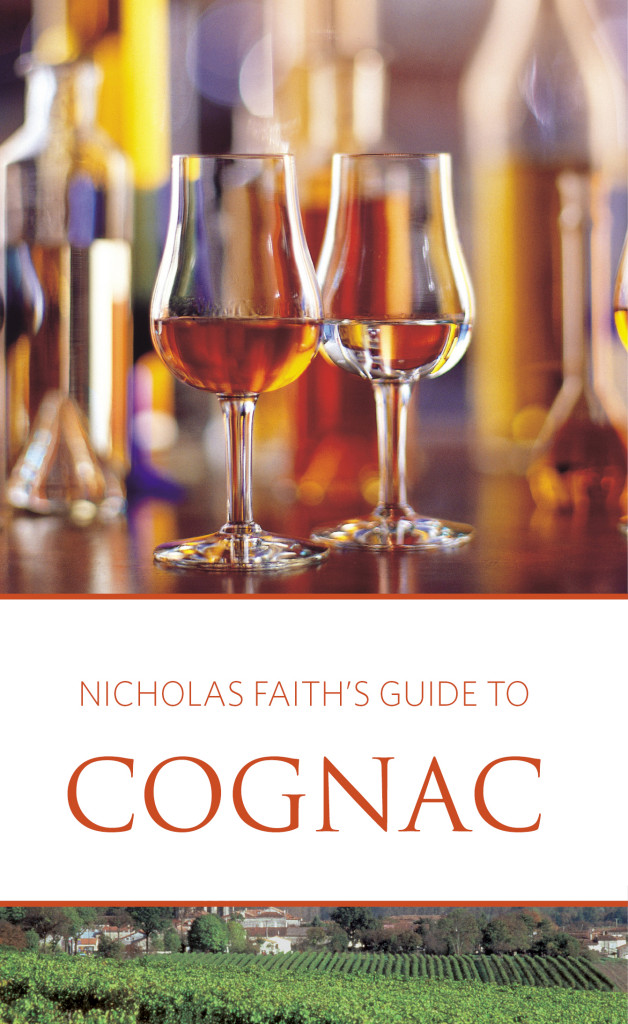 This directory of cognac brands is based on the author’s thirty years’ experience in writing about the world’s greatest brandy, visiting the region’s producers and discussing their offerings with them. The tasting notes reflect Nicholas’s personal tastes, which are for cognacs which combine purity – that is, the lack of any apparent sugar, caramel, or artificial woodiness – with positive qualities, reflecting grapiness, nuttiness and fresh or candied fruitiness.
This directory of cognac brands is based on the author’s thirty years’ experience in writing about the world’s greatest brandy, visiting the region’s producers and discussing their offerings with them. The tasting notes reflect Nicholas’s personal tastes, which are for cognacs which combine purity – that is, the lack of any apparent sugar, caramel, or artificial woodiness – with positive qualities, reflecting grapiness, nuttiness and fresh or candied fruitiness.
Nicholas Faith’s Guide to Cognac provides full contact details and tasting notes for well over 100 cognac producers. In addition our friends at Cognac-Expert.com have supplied some tempting cocktail recipes to sample.
We hope this directory will provide you with an up-to-date source of information while also introducing you to a new world of cognac producers.
Our book has been recommended by Per Karlsson, of BK Wine Magazine: ‘If you want to know a little more about cognac you could do worse than getting yourself a free copy of Nicholas Faith’s Guide to Cognac. You can buy [a printed version or] the electronic version at no cost.
Nicolas Faith is an expert on cognac and has written extensively on it over many years. Perhaps one of the world leading experts on the spirit from Charentes.
This small book contains an introduction to cognac and a “directory” of the main cognac producers, including short profiles and tasting notes of the producers. More than 100 producers are included. It is short, concise and a good start for the cognac lover.
This book is based on Nicolas Faith’s much more extensive tome Cognac: The Story of the World’s Greatest Brandy, published by Infinite Ideas. “The Guide” has some 130 pages in small format whereas “The Story” is more than 200 pages filled with much denser text.’
Sherry Baby!
18 July 2014 by Catherine Holdsworth in Wine and spirits
We at Infinite Ideas are very excited today! The manuscript for Julian Jeffs’ sixth edition of the ultimate Sherry guide has arrived and will be ready for publication in November. Here’s a little something to whet your appetites:
A sickly old-fashioned drink fit only for the plughole, or one of the world’s best value and underrated drinks? Focus your attention on Fino and you might soon have an opinion. The reason for the huge success of Sherry during the 50s and 60s was that it was an inexpensive, potent and supposedly long-lived alternative to wine. Now that wine is cheaper we think nothing of cracking open a bottle at the drop of a hat. But Fino Sherry is arguably the most delicious, best-value, highest-quality wine known to humankind. In order to decide where you stand on the issue you need to undertake a most dramatic exercise in filleting: imagine that the only style of Sherry in existence is Fino.
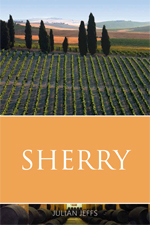 Sounds radical, but the idea is not that you never allow any other type of Sherry to pass your lips, but simply that if you are to learn to understand Fino you must renounce all other Sherries.
Sounds radical, but the idea is not that you never allow any other type of Sherry to pass your lips, but simply that if you are to learn to understand Fino you must renounce all other Sherries.
Sherry is made in Andalucia near the seaside towns of Jerez de la Frontera (‘Jerez’ is the origin of the English name ‘Sherry’), Sanlucar de Barrameda and Puerto de Santa Maria. The Palomino Fino grape used makes pretty dull table wines but great Fino Sherry thanks to a natural yeast called ‘flor’ that is created by the Sherry-making process. Fino is created by a curious, complex process known as the solera system in which after a few years in the barrel a third of the oldest Sherry is bottled and the remainder is topped up with younger Sherry before being aged further.
Taste Test
• Good-quality Fino • Cheap Fino • Cheap Port • Pouilly Fume •
White Rioja • Cheap Australian Chardonnay.
Tasting these wines side by side will help you to put the unique character of Fino into context. The point to remember when tasting these wines is that unlike the others (with the exception of the Port) Fino is fortified to a strength of around 15% – double that of some light German wines and a third more than most white wines. On an empty stomach you’ll find that it packs an even more powerful punch.
Here’s an idea for you:
Keep a bottle of Sherry in the fridge for use as an early evening sharpener. One evening you could even try drinking it as an accompaniment to food. Just remember that it has quite a high alcohol content.
Taken from Instant wine expert by Giles Kime
The cognac aroma wheel: your guide to cognac harmony
4 July 2014 by Infinite Ideas in Wine and spirits
This infographic is taken from Cognac, by Nicholas Faith, who has also written Nicholas Faith’s guide to cognac, which you can download free here. Both guides highlight the extraordinary range of cognacs available and will teach even the most clued-up cognac fan a few things about their favourite drink.
The great thing about cognac is the complexity of its flavours, which alter according to the seasons and the more mature the spirit, the better. See if you can spot any of these flavours the next time you have a glass:
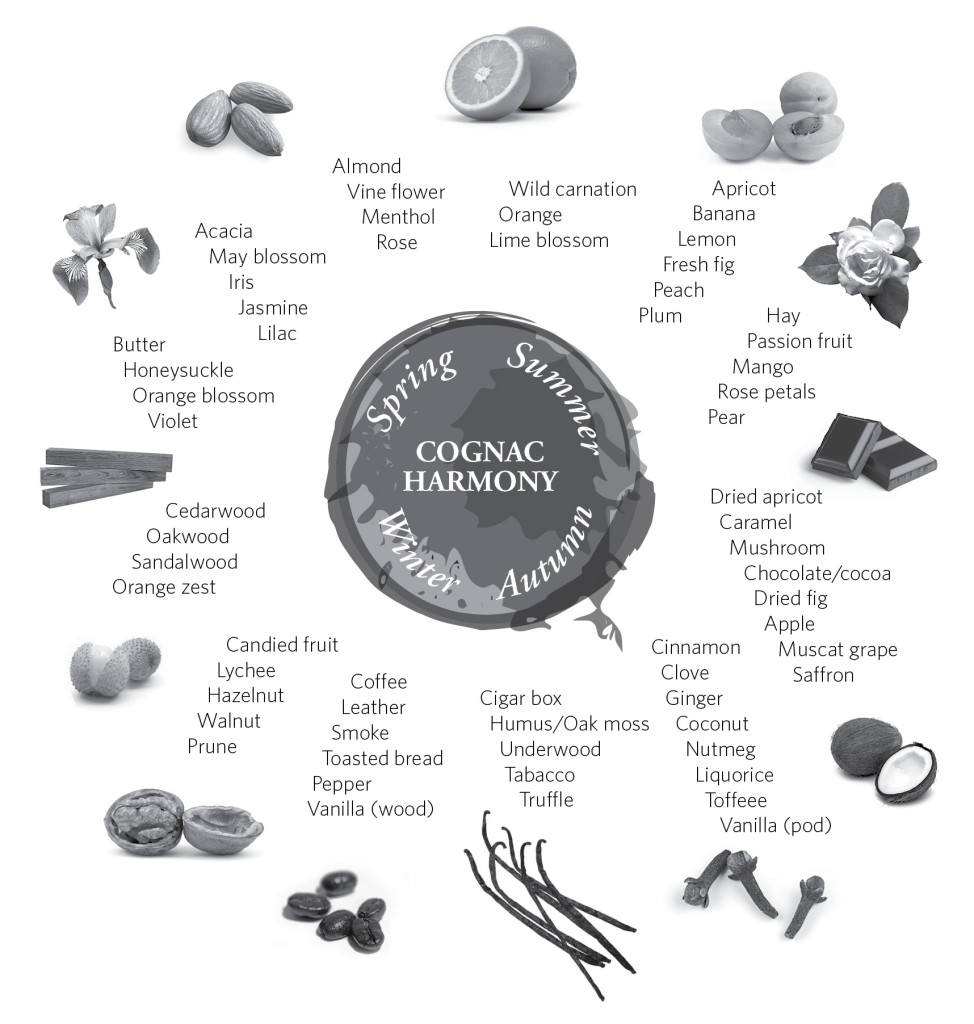
New release: Cognac by Nicholas Faith
2 October 2013 by Admin in Book publishing, Wine and spirits
What is it that inspires people to spend astronomical sums of money on a cask of cognac? And what is it about this golden drink that has even driven people to violence? To put it simply: why is cognac the world’s greatest brandy?
Nicholas Faith has the answers in his acclaimed Cognac, an unparalleled collection of insights into the world’s finest brandy. This book is an expertly led tour through cognac’s fascinating history, with quick reference sections to amuse and intrigue. Find out why Snoop Doggy Dog and Jay-Z get a mention; which are the best years for quality vintages (and which should be avoided); which firms produce the finest cognacs (from one-man operations to huge manufacturers), and which oaks impart the best flavours.
Nicholas Faith is the world’s leading authority on cognac and has twice won the prestigious André Simon prize. Our completely updated third edition of Cognac includes a fully updated directory of the top producers and their brandies, including the author’s tasting notes.
Our favourite parts of the book have to be the sections on combining cognac with chocolate, and the assortment of cocktail recipes. We thought we’d share a few with you here.
To make a Brandy Julep you will need:
5–6 mint leaves
1 tsp caster sugar
1 measure of cognac
Put the ingredients into a Collins glass (a small but tall tumbler) and stir until the mint rises to the top.
To make a Brandy Collins, simply mix together:
1tsp caster sugar
1 small measure of cognac
Juice of ½ lemon
Soda
Santé!


